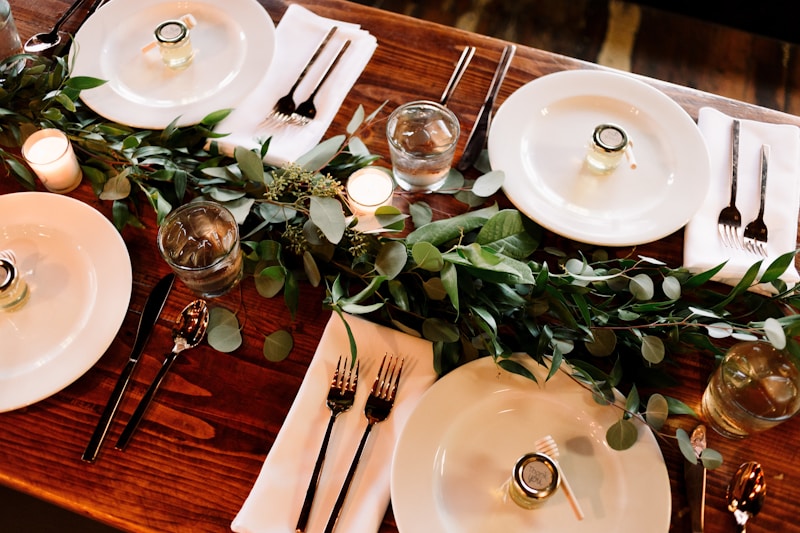Floral Trends for Modern Weddings: An Ultimate Guide to Elevate Your Big Day
Introduction to Modern Wedding Floral Trends
Floral design is not just a detail of modern weddings; it’s a significant aspect that can drastically transform the overall look and feel of your big day. In the realm of wedding planning, understanding the latest floral trends is crucial for couples looking to create a memorable atmosphere that reflects their unique styles. In this comprehensive guide, we will explore the latest floral trends for modern weddings, including color palettes, flower varieties, and arrangement styles, ensuring that you have all the insights you need to make the right choices for your dream wedding.
Embracing Unique Color Palettes
One of the standout trends in modern weddings is the adoption of bold and unconventional color palettes. Couples are moving away from traditional whites and pastels and embracing vibrant hues and contrasting combinations. Here are some popular color palettes for floral arrangements:
| Color Palette | Description |
| Bold Jewel Tones | Deep emeralds, rich purples, and ruby reds that create an opulent feel. |
| Pastel Neutrals | Soft pinks, creams, and taupes for a romantic and understated elegance. |
| Monochromatic Scheme | Choosing different shades of a single color, such as varying hues of blue or pink. |
| Rustic Earth Tones | Warm browns, burnt oranges, and ochres to give a cozy and natural vibe. |
This trend invites couples to express their personalities and set the mood for their wedding. When selecting your colors, consider the season and venue, ensuring that your floral choices complement the overall aesthetic.
Choosing the Right Flowers
The choice of flowers is paramount, as it not only affects the aesthetic but also the scent and symbolism of your wedding. Here are some trendy flowers for modern weddings:
- Dahlias: Known for their large blooms and variety of colors, dahlias are perfect for creating striking arrangements.
- Roses: A classic that never goes out of style, roses now come in unexpected colors and varieties.
- Garden Roses: These have a more romantic and full-bodied shape, making them perfect for elegant bouquets.
- Eucalyptus: Frequently included for its beautiful foliage and unique scent, it’s great for adding texture to arrangements.
- Protea: This exotic flower is a stunning centerpiece that can add a wild element to floral designs.
When selecting flowers, consider their seasonal availability to ensure freshness and sustainability. This approach not only enhances the visual impact but also supports local florists and reduces your wedding's carbon footprint.
Floral Arrangement Styles
Floral arrangements can range from classic bouquets to modern installation pieces. Here are some popular styles to consider for your wedding:
- Cascading Bouquets: These feature long, trailing flowers and vines, creating a dramatic and romantic look.
- Loose and Wild Arrangements: Popular in bohemian weddings, these arrangements emphasize a natural, organic look.
- Geometric Centerpieces: Incorporating geometric shapes in centerpieces can provide a contemporary twist to floral designs.
- Floral Installations: Large hanging arrangements or wall installations can serve as stunning focal points at your venue.

Seasonal Trends in Wedding Flowers
As seasons change, so do the trends in wedding floral design. Here’s a seasonal breakdown of what to consider:
- Spring: Tulips, peonies, and cherry blossoms dominate this season, offering a fresh and vibrant look.
- Summer: Sunflowers, dahlias, and vibrant garden blooms are perfect for sunny summer weddings.
- Fall: Rich earth tones, including burnt oranges and deep reds, are complemented by seasonal flowers like chrysanthemums and dahlias.
- Winter: While it may feel limiting, winter offers unique flowers like amaryllis and seasonal greenery for a cozy feel.
Understanding seasonal trends can not only influence your flower choices but also your overall decor and theme.
DIY Floral Arrangements vs. Hiring a Florist
Couples often grapple with the decision to either create their floral arrangements or hire a professional florist. Here are some pros and cons of each option:
| DIY Floral Arrangements | Hiring a Florist |
| Cost-effective | Expert knowledge and design skills |
| Personal touch and customization | Access to a wider variety of flowers |
| Time-consuming | Less stress on the wedding day |
| Opportunity for fun DIY projects with friends | Professional setup and breakdown |
Ultimately, the decision depends on your budget, comfort level with floral design, and the availability of time leading up to your big day.
Tips for Incorporating Floral Trends into Your Wedding
To ensure your floral choices align with current trends while still reflecting your personal style, consider these tips:
- Start with inspiration — Pinterest, wedding blogs, and local florists can provide a wealth of design ideas.
- Mix and match textures to create depth in your floral arrangements, combining flowers, greenery, and other elements like fruits or foliage.
- Think about your venue when selecting floral arrangements; ensure they complement the architecture and ambiance.
- Involve your partner in the floral planning process to ensure both of your personalities shine through in the decor.
Conclusion: Elevating Your Wedding with Floral Trends
Incorporating the latest floral trends into your wedding is an excellent way to create a visually stunning and memorable experience. By selecting unique color palettes, choosing the right flowers, and considering various arrangement styles, you can craft an atmosphere that speaks to your love story. Remember to keep the seasons in mind and weigh the decision of DIY versus hiring a florist based on your personal strengths and budget. Ultimately, your floral choices should reflect your style and set the right tone for your wedding day.
Take your time during the planning process, gather inspiration, and enjoy creating a floral design that encapsulates your vision for a perfect modern wedding!